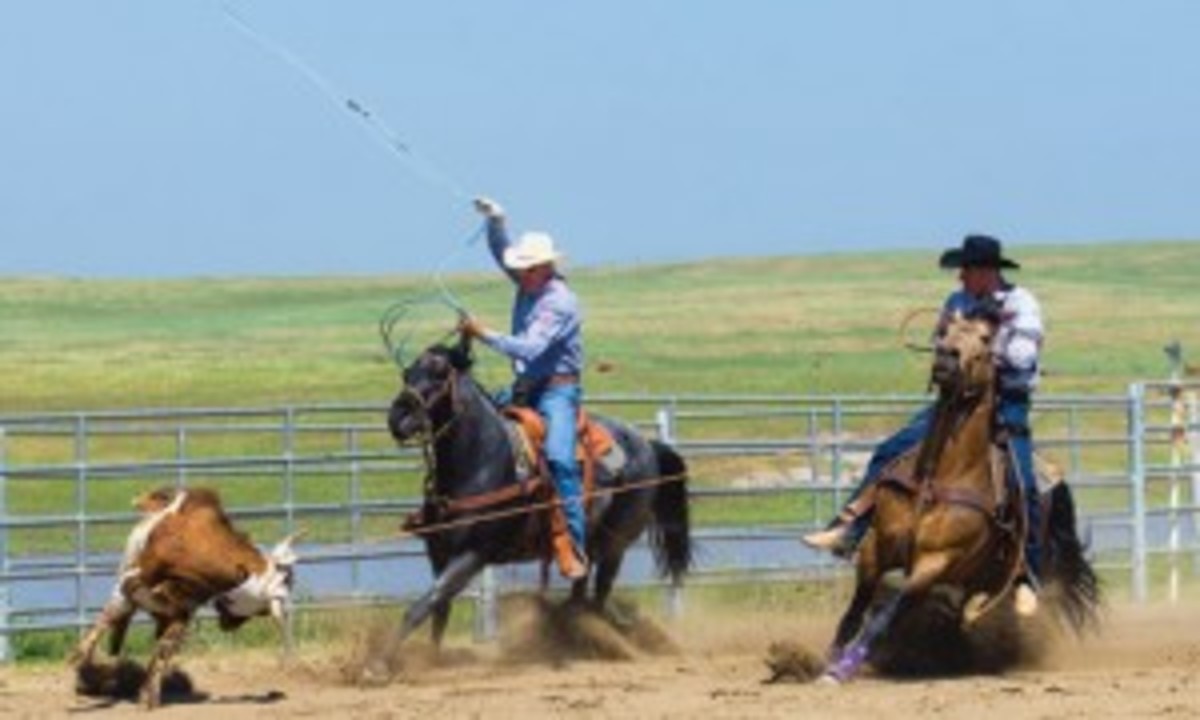
Keeping a rope horse in shape is no easy task. Building muscle, strong bones and physical endurance requires a lot of time from the horse owner. However, continuously riding horses in the arena can become boring and tedious for both the horse and handler. Spin to Win Rodeo discovered what four of the top pros do to keep their horses fit and fresh when they aren’t on the road.
JD Yates does a lot of roping at home, but when his horses need a break, he does a lot of “logging” (a trick ropers use to teach their horse to handle steers by attaching a heavy log to the end of their rope, dallying off and dragging it around). Logging horses out causes them to think about their foot position while they are dragging weight behind them as well as building up the muscles they use while roping, and providing them with a strenuous workout for the day, Yates says. He also uses all his horses to gather cattle and drag calves at brandings when he is first starting them. “Once they make the grade we try not to work them that hard, brandings are a lot of work for horses,” Yates says about his top horses.
Jerold Camarillo takes a very similar approach to working his horses out, using them to help friend Ace Berry gather cattle, drag calves and brand. Camarillo uses his horses to rope every day, doing lots of scoring. He tries not to rope more than four or five steers a day on his good horses, and instead does more loping on them than roping continuously. The most important aspect of Camarillo’s techniques to keeping his horses fit and fresh is not forcing them to do anything they don’t want to, and improvising their workouts from day to day, getting them used to cattle outside of the pen first and slowly moving them into frequent roping. By showing them cattle early on, his horses learn how cattle move and work, which later translates directly to the roping aspect of their training.

Clay O’Brien Cooper’s favorite way of keeping his horses in shape, on the rare occasion that he is home, is to ride his horses down the road a ways. He used to take his horses out like this quite frequently because of the convenient farm fields around where he lived. The nice jog down the road got the horse out of the arena to see new sights and not be confined by the usual arena panels, giving them a great workout as well. Even though Cooper hasn’t had a chance to do this in a while, he still believes in the strong benefits it offers horses that are used primarily in arenas. The horse becomes more bombproof with all the new sights, and also gets a great workout, keeping in shape and learning at the same time, Cooper says.
Lari Dee Guy prefers to keep her rope horses in shape by sending them to a friend who takes them out for swims. Swimming is beneficial especially for horses coming back off injury or who are prone to joint injuries; swimming provides the horse with a great workout and a far lower impact on the horses legs and body than a regular pen workout, Guy says. Swimming horses also helps them get used to water and learn to trust their handler in all situations. Guy also likes to long trot her horses on the ranch a lot, taking them through pastures to check fence and cattle. Long trotting the horses helps to build muscle and strength, as well as gives them a great view of what is past the arena panels. She also believes it best to let horses exercise themselves by keeping them in large open areas.








